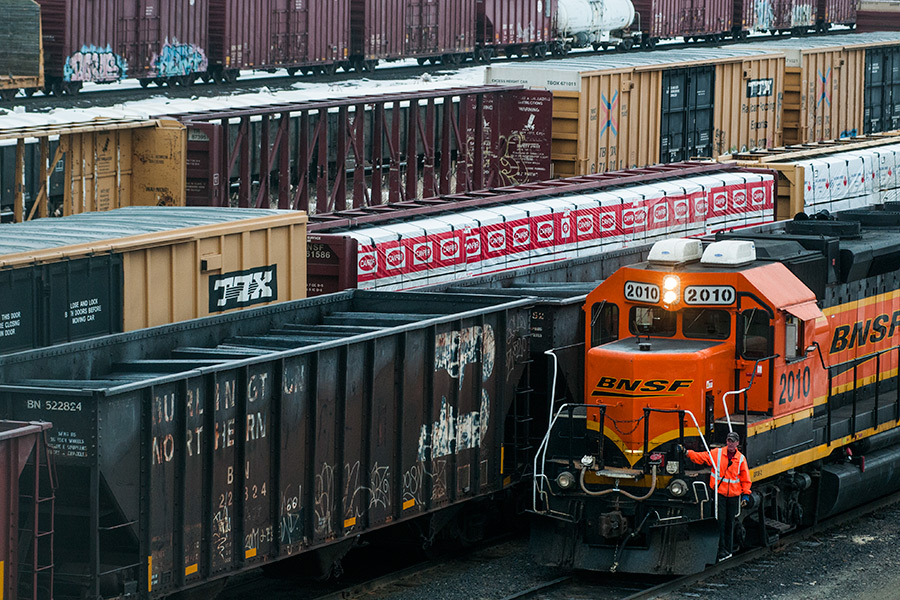BNSF Railway will invest $135 million on its Montana rail network this year, including a number of improvements to the 7-mile long Flathead Tunnel near Trego, the second longest railroad tunnel in the United States.
The multi-million dollar investment in Montana is part of an overall $3.3 billion BNSF plans to spend in 2018 on its 32,500-mile network that stretches across 28 states and three provinces. The railroad operates on more than 1,900 miles of track in Montana.
“Maintaining a safe and reliable network is one way BNSF works to keep Montana’s economy moving,” said Jon Gabriel, general manager of operations, for BNSF’s Montana Division. “Freight rail connects Montana’s farmers and lumber producers with the major U.S. markets, and with exports facilities ready to move their products overseas. Rail is also a vital component of getting the people of Montana the consumer products they need.”
The largest portion of the $135 million to be spent in Montana this year will go toward the replacement of rail, crossties and ballast, the main components of the tracks BNSF trains operate on. The railroad is also working on improvements to the ventilation system at Flathead Tunnel, a move that spokesperson Ross Lane said will help move trains through the area more efficiently.
The Flathead Tunnel was completed in 1970 after BNSF predecessor Burlington Northern had to reroute its rail line between Whitefish and Libby due to the construction of the Libby Dam and Lake Koocanusa. The Flathead Tunnel is second only in length to BNSF’s Cascade Tunnel in western Washington. Today, approximately 50 freight trains a day travel through the area, as well as Amtrak’s Empire Builder.
Because of the extreme length of the tunnel, a ventilation system is used to clear out locomotive exhaust between each train. Lane said it can take anywhere from 10 to 20 minutes to clear the air to make it safe for both employees and passengers. If there is a power outage, the railroad relies on a generator but it can take twice as long to clear exhaust out of the tunnel, Lane said.
“When the power goes out we can’t move as many trains,” Lane said.
To alleviate that issue, BNSF is installing a 2,000-kilowatt backup generator at the tunnel that will ensure the ventilation system can maintain normal power levels during outages. The railroad is also replacing some of the ventilation system’s fans and upgrading the computer system that runs it.
Lane said the new generator will help reduce delays to both freight and passenger trains.
The railroad also plans to upgrade its signal system on sections of track between Whitefish and Sandpoint, Idaho, known as the Kootenai River Subdivision. BNSF has invested approximately $850 million on its Montana network in the last five years.
Elsewhere on the BNSF system, the railroad plans on spending $300 million on new freight cars and $100 million to continue installing positive train control, a technology system meant to prevent speed-related derailments and collisions. Lane said positive train control technology is already in use on BNSF’s main route across Montana and through the Flathead Valley. Congress mandated the installation of positive train control following a fatal passenger train head-on collision in California in 2008; railroads have until Dec. 31 of this year to install it on routes that host passenger trains or hazardous materials.
